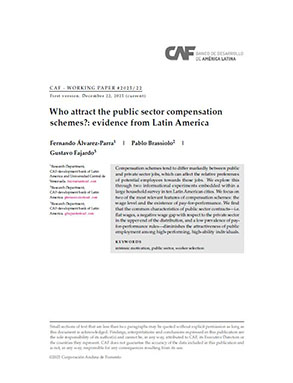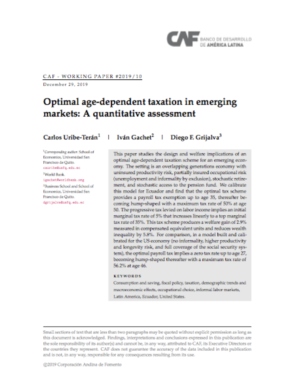Who attract the public sector compensation schemes?: evidence from Latin America
Resumo
Compensation schemes tend to differ markedly between public and private sector jobs, which can affect the relative preferences of potential employees towards those jobs. We explore this through two informational experiments embedded within a large household survey in ten Latin American cities. We focus on two of the most relevant features of compensation schemes: the wage level and the existence of pay-for-performance. We find that the common characteristics of public sector contracts—i.e. flat wages, a negative wage gap with respect to the private sector in the upper end of the distribution, and a low prevalence of payfor- performance rules—diminishes the attractiveness of public employment among high-performing, high-ability individuals.
Assunto
País / Región
Data
2021-12-22Cite esta publicação
Item que pertence à coleção

Items Relacionados
Public-Private Partnership in Latin America. Learning from experience
In recent decades, many Latin American countries have launched public-private partnership models for the construction, maintenance and operation of ...
Optimal age-dependent taxation in emerging markets: A quantitative assessment
This paper studies the design and welfare implications of an optimal age-dependent taxation scheme for an emerging economy. The setting is an overlapping ...



